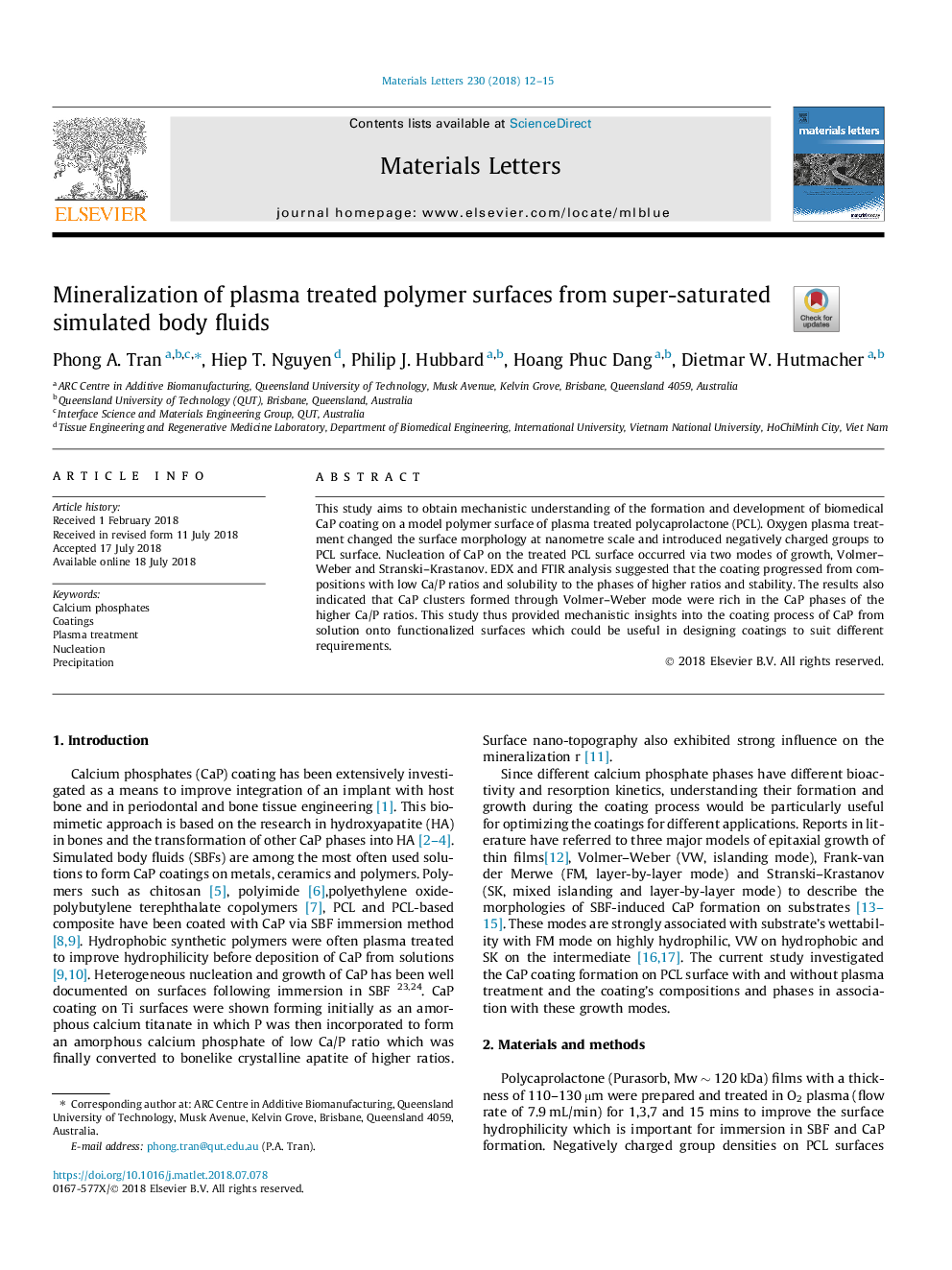| Article ID | Journal | Published Year | Pages | File Type |
|---|---|---|---|---|
| 8012335 | Materials Letters | 2018 | 4 Pages |
Abstract
This study aims to obtain mechanistic understanding of the formation and development of biomedical CaP coating on a model polymer surface of plasma treated polycaprolactone (PCL). Oxygen plasma treatment changed the surface morphology at nanometre scale and introduced negatively charged groups to PCL surface. Nucleation of CaP on the treated PCL surface occurred via two modes of growth, Volmer-Weber and Stranski-Krastanov. EDX and FTIR analysis suggested that the coating progressed from compositions with low Ca/P ratios and solubility to the phases of higher ratios and stability. The results also indicated that CaP clusters formed through Volmer-Weber mode were rich in the CaP phases of the higher Ca/P ratios. This study thus provided mechanistic insights into the coating process of CaP from solution onto functionalized surfaces which could be useful in designing coatings to suit different requirements.
Related Topics
Physical Sciences and Engineering
Materials Science
Nanotechnology
Authors
Phong A. Tran, Hiep T. Nguyen, Philip J. Hubbard, Hoang Phuc Dang, Dietmar W. Hutmacher,
